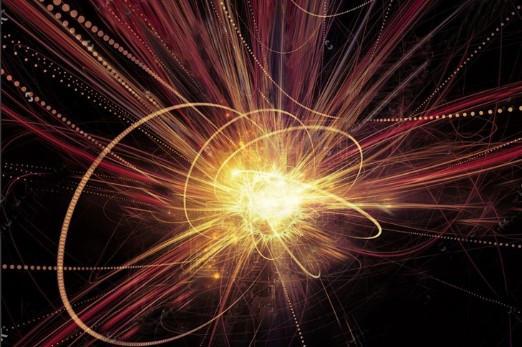Muons are subatomic particles that act like electrons but weigh 200-times more. Their existence lasts microseconds before they degrade in 2.2 microseconds into electrons and neutrinos. Muons can be found everywhere. They travel at near light speed and if we could harness them in a beam using a laser we can create Superman x-ray vision to see inside objects previously impenetrable by x-rays, and other imaging technologies.
Muon beams have already been used to see inside the Great Pyramid at Giza in Egypt. But this use of muon beams has limits because creating them on demand requires particle accelerators. Particle accelerators don’t pop up everywhere. Two places, however, where they do exist are the Fermilab in Illinois and the CERN accelerator in Switzerland.
If we didn’t need to rely on particle accelerators to create muon beams, they could become extremely useful for imaging areas previously unseen like the hidden chamber recently revealed at the Great Pyramid.
The U.S. Department of Energy (DOE) is studying muons in an effort to unlock the secrets of dark matter, dark energy, and antimatter. But the work at DARPA, (The Defense Advanced Research Projects Agency) is doing muon research of a different nature. Its purposes are less about science and more about revealing secrets.
DARPA recently launched MuS2, the Muons for Science and Security program. Its goal is “to develop a directional source of muons produced at relevant energies and intensities and in sufficient quantities.” For what purpose you ask? To create a transportable visioning system, in other words, a practical portable directional muon beam machine that can be put on a truck. A proposers’ day is scheduled next week with invitations open to all to participate. DARPA hopes to involve small businesses, universities, research institutions, and first-time government contractors.
The technology currently used to produce a muon beam is not portable. For example, the Fermilab facility requires a 15.24 metre (50-foot) diameter superconducting magnetic ring sitting in a room cooled to a temperature of -267.8 Celsius (-450 Fahrenheit) degrees. But what DARPA envisions would be laser-plasma acceleration (LPA) technology operating in tens of centimetres of space rather than hundreds of metres such as at Fermilab or CERN. And unlike those two sites, the technology would operate at ambient temperatures.
DARPA’s purpose is primarily to create a military application. The technology has to be portable to meet battlefield conditions or for use in the event of a disaster to detect threats such as would occur with a nuclear reactor incident. It has to provide imaging that is better than gamma-ray detectors, lidars, ground-penetrating radar, and other existing penetrating technologies. It should be capable of seeing deep into the Earth and be able to map underground tunnels, caves, and hidden chambers. DARPA has set a two-year deadline for proposers to submit solutions.
As in all beam technology, there is another application, to create a weapon that could be used to disable or destroy a target. A muon beam could be projected long distances to disrupt the electronics of an incoming missile bringing to life what we regularly see in episodes of Star Trek.










Hi Len: back a couple of years after 9/11 we started MuVision to detect nuclear WMD in ship containers using muons and used the detectors now at CERN/ATLAS to show we could detect heavy metals (Tungsten) but DHS turned us and three other companies (major defense contractors) down. So nothing was done in that field. Natural muon flux is pretty low (about one per second per square cm. >0.5 Gev) but manufactured fluxes can be pretty high but dangerous. If time is not an issue, it’s quite possible. Right now I’m working on LENR, trying to get the world interested in funding serious research in it. ( I think I put this in the wrong place before.)
You’re not alone. Well over 15 years ago or more, Muons, Inc. of Batavia, IL proposed something quite similar for the US border; it was never funded as it was judged that it would take too long (>2 minutes? – I can’t remember the time) to scan a tractor trailer using cosmic ray muons.
Since then a Japanese fellow (sorry, I forget his name offhand) suggested the US convert a retired nuclear powered aircraft carrier into a muon accelerator and as an international goodwill gesture, use it to periodically do high resolution muon scans of volcanoes around the world for explosion hazards. It would allow much more horizontal & much higher resolution scans than can be done just with cosmic ray muons.